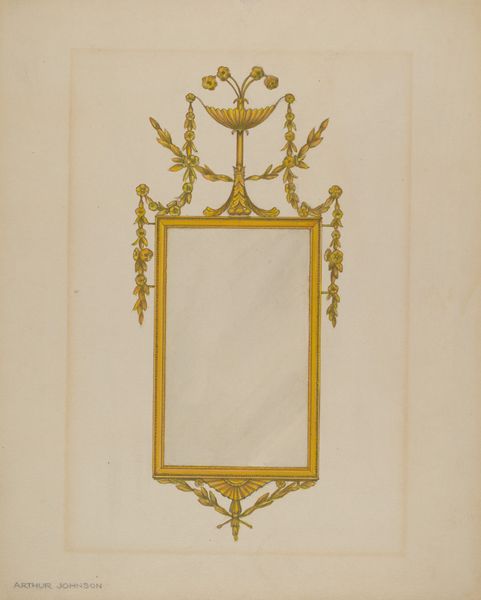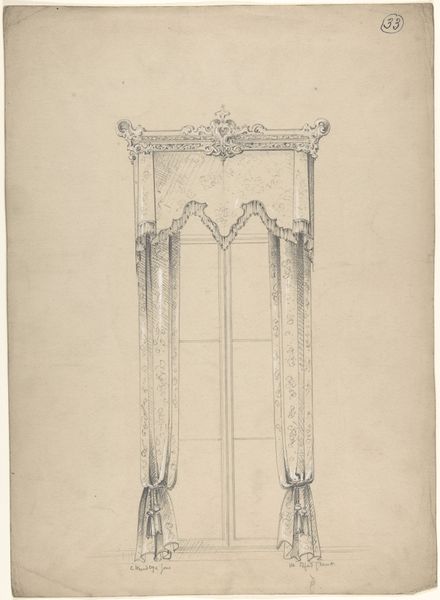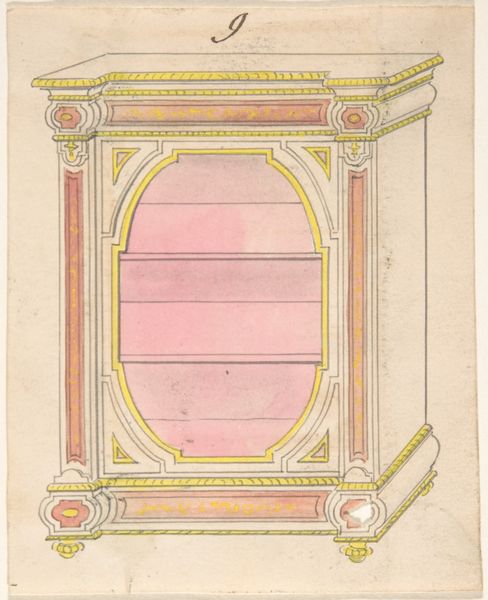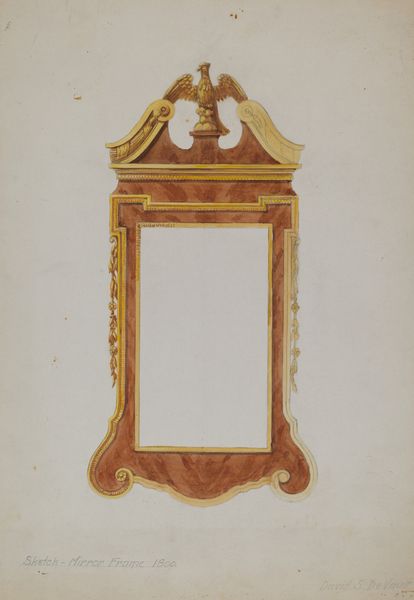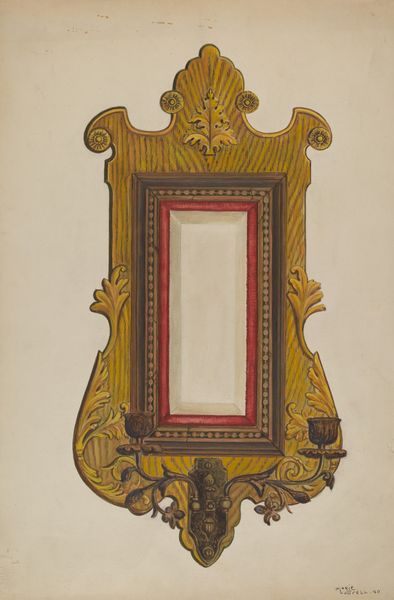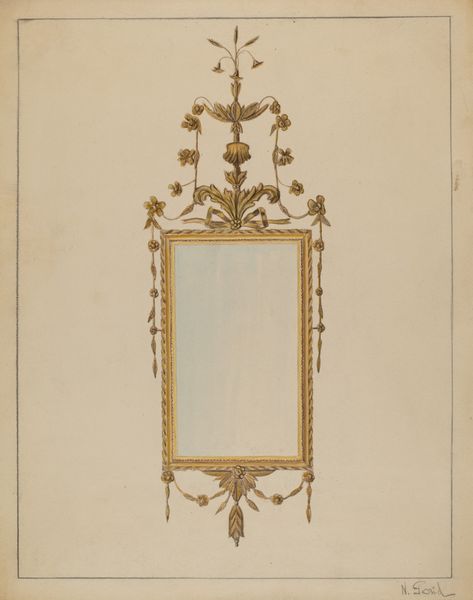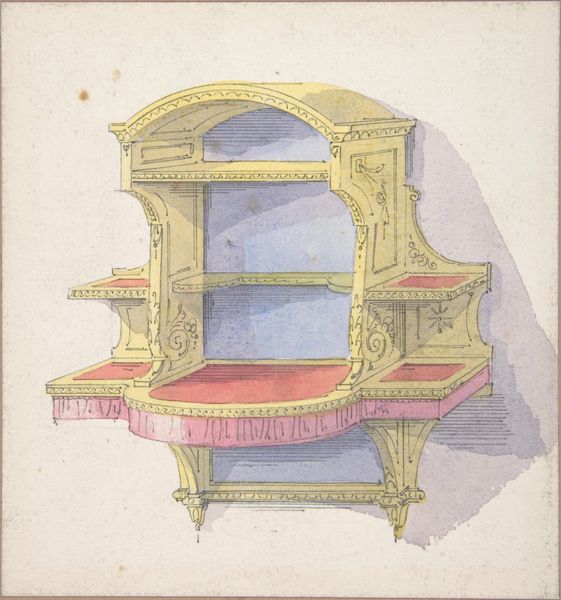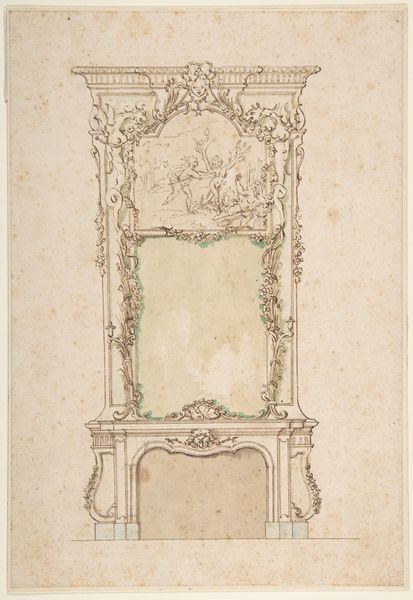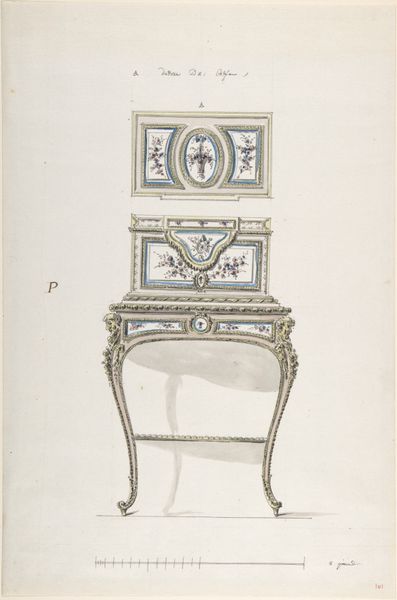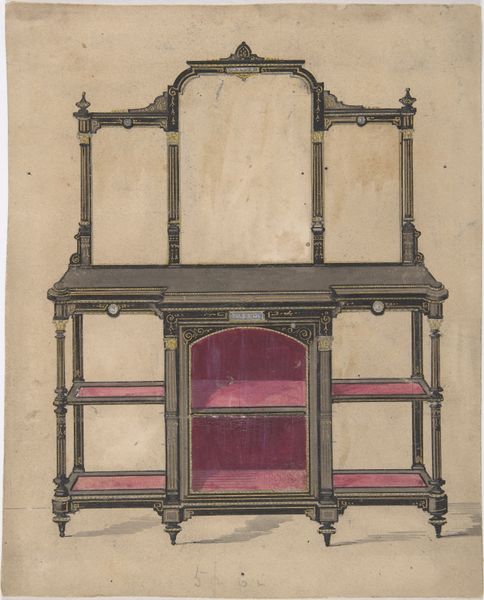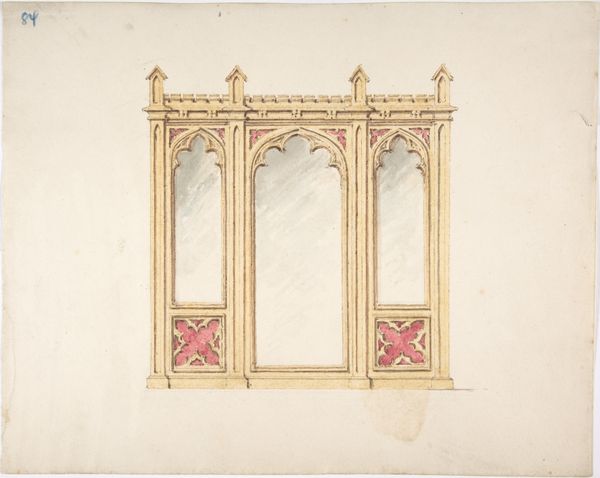
drawing, coloured-pencil, print, watercolor
#
drawing
#
coloured-pencil
#
water colours
# print
#
watercolor
#
coloured pencil
#
decorative-art
Dimensions: sheet: 6 3/8 x 4 7/16 in. (16.2 x 11.2 cm)
Copyright: Public Domain
Curator: Here we have "Design for a Hanging Mirror with Shelves," created sometime between 1820 and 1880 by an anonymous artist. It’s a striking work on paper, employing watercolor, colored pencil, and possibly even printmaking techniques. Editor: It certainly is. My first impression is that it's meticulously symmetrical, with that almost austere quality conveyed by the combination of cool blues of the mirror against the decorative golden framework. Curator: It speaks to the aspirational ideals of the era. Mirrors, then, weren’t just functional, but symbols of status, closely associated with personal grooming rituals inseparable from constructing gendered identities within bourgeois society. This design reflects that world. Editor: True, and the ornament, seen purely formally, adds such elegance. Consider the play of line; the ornate curves balanced against the straight vertical supports. The colour palette is so carefully judged, those vibrant purple shelving surfaces. The artist shows complete command of their media. Curator: Yes, the medium is interesting in itself. These drawings, with their ornate detailing, were likely made for artisans who, restricted by class, likely had very little say over the style and the forms, which often embodied wealth. Editor: An interesting class disparity made evident in the art. Although I confess, I'm more absorbed by the craftsmanship that marries utility with artistic form. The reflective capacity within a rigid frame is an intersection of experience that is inherently beguiling. Curator: And the absence of an identifiable author certainly raises interesting questions about the role of design, labor, and creative authority within the decorative arts tradition of that period. It seems to question ideas about individualism. Editor: Indeed. I am seeing now, with all the contextual details in mind, it feels quite different than my initial read. It now challenges my own concept of creative signature and intentionality. Curator: Ultimately, this design gives us a rich lens through which to understand the social and economic dynamics of 19th-century craftsmanship and artistic expression. Editor: Yes, it provides more depth through thoughtful historical, philosophical and formal engagement, which enhances how we can perceive art!
Comments
No comments
Be the first to comment and join the conversation on the ultimate creative platform.
